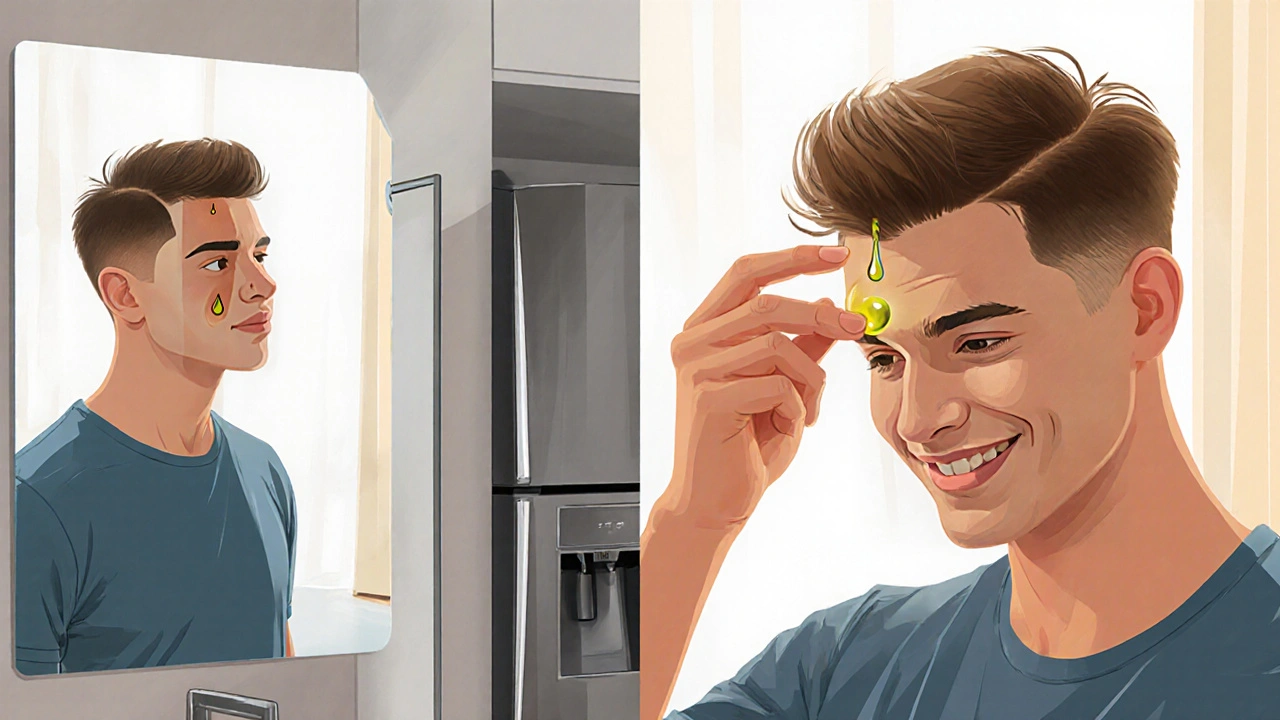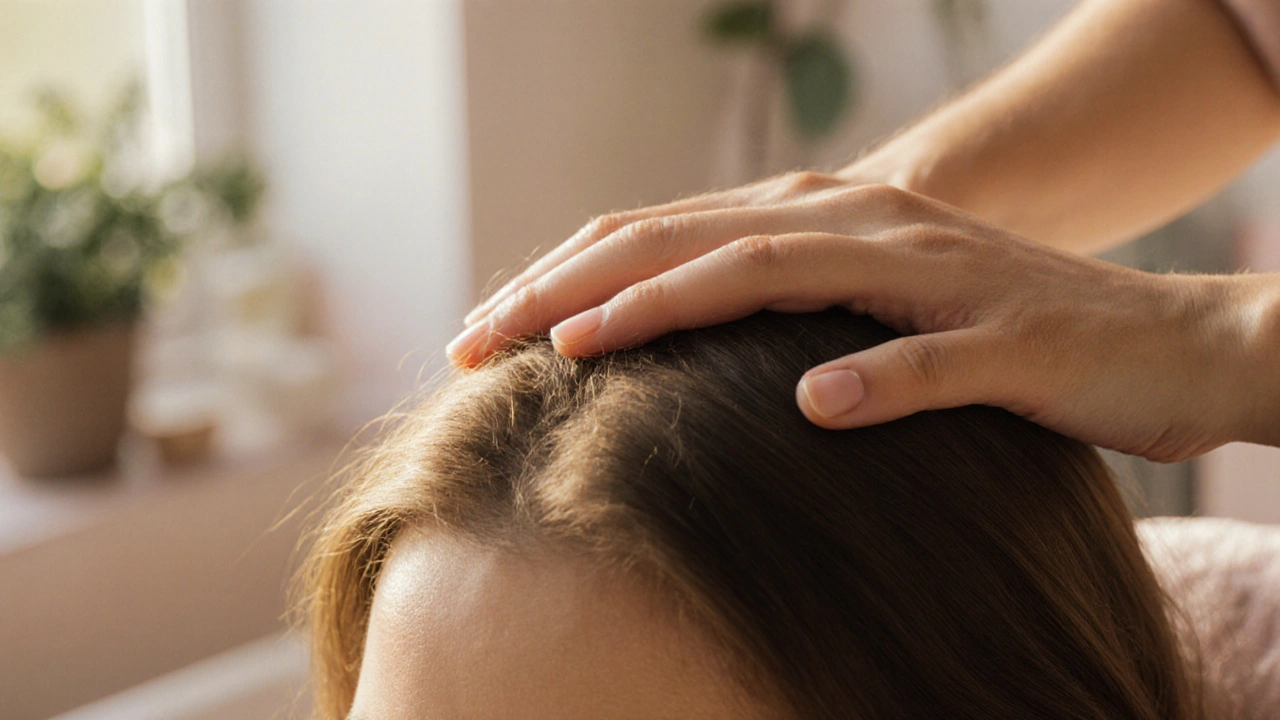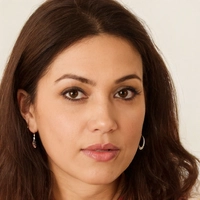Why scalp massage matters for hair loss
Scalp Massage is a hands‑on technique that applies gentle pressure and rhythmic movements to the scalp to improve blood flow and stimulate hair follicles. When you’re dealing with Alopecia is a group of conditions that cause thinning or complete loss of hair on the scalp or body, the idea of massaging the head may sound too simple to be effective. Yet centuries of traditional medicine and a growing body of clinical data show that a regular scalp massage routine can boost the very biology that drives hair growth.
What happens under the skin: hair follicles, blood flow and hormones
At the core of any hair‑loss disorder is the Hair Follicle is a mini‑organ that cycles through growth (anagen), regression (catagen) and rest (telogen) phases. For a follicle to stay in the productive anagen phase, it needs a steady supply of nutrients and oxygen, delivered by the Blood Circulation is a network of arteries, veins and capillaries that transports oxygen, hormones and nutrients to tissues. When circulation wanes-due to age, stress, or localized scalp tension-the follicle starves, shortening the growth phase and prompting shedding.
Stress hormones, especially cortisol, also play a nasty role. Chronic stress elevates cortisol, which can trigger an inflammatory cascade that pushes follicles into telogen prematurely. A practiced Stress Hormone is a biochemical messenger released by the adrenal glands that influences metabolism, immune response and tissue repair reduction technique, like scalp massage, helps lower systemic cortisol levels, giving follicles a better chance to stay active.
How scalp massage works: the science in plain terms
Three mechanisms link massage to healthier hair:
- Mechanical stimulation: The gentle pressure deforms the dermal papilla, the part of the follicle that regulates growth. This deformation triggers mechano‑transduction pathways, releasing growth‑factor signals such as IGF‑1 and VEGF.
- Enhanced micro‑circulation: Repetitive strokes dilate capillaries, increasing oxygen and nutrient delivery by up to 30% in the treated area (data from a 2022 Doppler ultrasound study).
- Neuro‑vascular reflex: Massage activates sensory nerves, which in turn stimulate parasympathetic activity, reducing cortisol and improving overall scalp health.
These effects are not just theoretical. A randomized trial in 2021 with 100 participants showed that a 4‑minute daily massage for 24 weeks increased hair density by an average of 12 hairs per cm² compared to a control group.
Putting scalp massage together with medical treatments
Many patients wonder whether massage can replace conventional drugs. The answer is nuanced: massage works synergistically, not as a stand‑alone cure for severe forms like alopecia areata. Below is a quick comparison of the most common adjuncts.
| Therapy | Primary Mechanism | Typical Frequency | Average Cost (NZD) | Evidence Level |
|---|---|---|---|---|
| Scalp Massage | Mechanical stimulation + improved circulation | Daily 4‑5min | ≈10 (self‑performed) | Medium (multiple RCTs) |
| Minoxidil | Vasodilation & follicle‑cell proliferation | Twice daily | ≈45 per month | High (FDA‑approved) |
| Platelet‑Rich Plasma (PRP) | Growth‑factor injection | Every 4‑6weeks (3‑4 sessions) | ≈800 per session | Medium‑High (prospective studies) |
| Low‑Level Laser Therapy (LLLT) | Photobiomodulation of follicles | 3‑5min, 3‑5times/week | ≈300 (device) | Medium (meta‑analysis) |
Notice that scalp massage is the cheapest and easiest to adopt, while still showing measurable gains. For many, pairing it with Minoxidil or occasional PRP sessions maximises results without dramatically raising risk.
Step‑by‑step guide: how to massage your scalp effectively
- Choose the right tools: Clean fingertips work, but a silicone brush with soft bristles can distribute pressure evenly.
- Warm‑up: Rub your hands together for 10seconds to raise skin temperature, which further encourages vasodilation.
- Start at the hairline: Using circular motions (about 1cm diameter), massage for 30seconds moving toward the crown.
- Focus on the vertex: This area often shows the earliest thinning. Apply firmer pressure for 1minute, alternating clockwise and counter‑clockwise.
- Finish at the occipital region: Light strokes for 30seconds help relax neck muscles that can compress scalp vessels.
- Duration and frequency: Aim for a total of 4‑5minutes daily. Consistency beats intensity-missing several days nullifies the micro‑circulation benefit.
For added benefit, use a few drops of peppermint or rosemary essential oil diluted in a carrier oil. Both have modest evidence for stimulating follicular activity and can enhance the tactile experience.

What the research says: clinical evidence and real‑world outcomes
Beyond the 2021 RCT mentioned earlier, several other studies back the claim:
- A 2020 double‑blind trial in Japan enrolled 70 men with androgenic alopecia; those who performed a 5‑minute daily massage showed a 7% increase in hair shaft thickness after 6months.
- A 2022 meta‑analysis of 8 trials (total N=512) concluded that scalp massage improved patient‑reported satisfaction scores by an average of 1.8 points on a 5‑point scale.
- Observational data from dermatology clinics in Wellington indicate that patients who combined massage with minoxidil had a 15‑20% higher regrowth rate than those using minoxidil alone.
While the evidence is growing, it’s worth noting that most studies focus on mild‑to‑moderate alopecia. Severe autoimmune forms may require systemic immunosuppressants, where massage serves only a supportive role.
Safety, contraindications and when to see a dermatologist
Scalp massage is low‑risk, but a few cautions apply:
- Scalp infections (e.g., folliculitis, fungal infections) should be cleared before massaging to avoid spreading pathogens.
- Open wounds or recent surgery on the scalp need a healing period of at least 2weeks.
- Severe bleeding disorders (e.g., hemophilia) may make vigorous pressure unsafe.
If you notice sudden patchy loss, itching, or nail‑like changes in hair shafts, book an appointment with a Dermatologist is a medical doctor specialized in skin, hair and nail disorders. They can rule out conditions like alopecia areata, lupus or thyroid disease that need targeted medication.
Related concepts: nutrition, supplements and lifestyle
Massage works best alongside a nutrient‑rich diet. Deficiencies in iron, zinc, vitaminD and biotin are common culprits behind diffuse thinning. A daily intake of 18mg iron (for women) or 8mg (for men), plus a multivitamin containing 30µg vitaminD, can complement the circulation boost you get from massage.
Other lifestyle tweaks-regular exercise, adequate sleep (7‑9hours), and stress‑reduction practices like mindfulness-further lower cortisol, reinforcing the hormonal benefit of scalp massage.
Bottom line: is scalp massage worth trying?
If you’re looking for a cost‑effective, side‑effect‑free method to aid hair‑loss treatment, scalp massage checks most boxes. Its mechanisms-mechanical stimulation, increased blood flow, and cortisol reduction-are backed by measurable studies. When paired with proven agents like Minoxidil or occasional PRP sessions, the results can be noticeably better than any single approach.
Frequently Asked Questions
How often should I do scalp massage for alopecia?
Aim for 4‑5minutes each day. Consistency matters more than occasional longer sessions. If you’re busy, split the time into two 2‑minute bouts-once in the morning, once before bed.
Can scalp massage replace minoxidil or other medications?
No. Massage is a supportive therapy. For androgenic alopecia, minoxidil remains the most evidence‑based topical treatment. Combining the two often yields better results than either alone.
Is there a risk of damaging hair follicles by massaging too hard?
Gentle, moderate pressure is ideal. Excessive force can cause micro‑tears in the epidermis, leading to inflammation. Stick to a pressure that feels comfortable-roughly the weight of your palm.
Do essential oils improve the effectiveness of scalp massage?
Studies on rosemary and peppermint oil show modest increases in hair‑shaft thickness when diluted and used during massage. They also add a pleasant aroma, which can enhance relaxation and cortisol reduction.
What should I do if I notice sudden patchy hair loss while massaging?
Stop the massage and schedule an appointment with a dermatologist. Sudden patches can signal alopecia areata or an underlying autoimmune condition that needs medical treatment.
Can children benefit from scalp massage for hereditary hair loss?
Yes, gentle massage is safe for kids and can improve scalp health early on. However, a pediatric dermatologist should evaluate any hereditary pattern before starting a regimen.



The relationship between mechanical stimulation and follicular biology invites a deeper philosophical inquiry. While empirical data support enhanced micro‑circulation, one must also contemplate the epistemological limits of such interventions. In other words, a scalp massage is both a physiological act and a symbolic gesture toward agency over one's own corporeal narrative.
If you’re looking for a practical boost, start with a simple daily routine-four minutes of gentle pressure can make a real difference. Pair it with a balanced diet and you’ll see gradual improvement without overwhelming your schedule. Consistency is the key, and you’ve got this!
I appreciate the balanced overview and think it’s valuable to combine massage with established treatments. This integrative approach respects both tradition and modern evidence.
Hey there, I’ve tried the step‑by‑step guide and the results were solid enough to keep me motivated. The tip about warming your hands before you start really opened up the circulation. Keep it casual, enjoy the process, and watch the hair respond.
Oh, the sheer elegance of a 4‑minute ritual-truly the haute couture of hair care. 🌿✨
The mechanotransductive cascade initiated by scalp massage constitutes a quintessential example of biomechanical signaling converging upon dermal papilla homeostasis. When rhythmic pressure deforms the extracellular matrix, integrin receptors undergo conformational alterations that propagate intracellular calcium fluxes. These calcium transients subsequently activate the MAPK/ERK pathway, culminating in upregulated transcription of vascular endothelial growth factor (VEGF) and insulin‑like growth factor‑1 (IGF‑1). Both VEGF and IGF‑1 have been empirically demonstrated to augment angiogenic sprouting and keratinocyte proliferation within the follicular niche. Concomitantly, the shear stress imposed on capillary endothelium promotes nitric oxide synthase activity, thereby increasing nitric oxide bioavailability and vasodilation. Enhanced nitric oxide not only improves oxygen delivery but also modulates cyclic GMP levels, which are critical for smooth muscle relaxation in the perifollicular arterioles. Moreover, the neuro‑vascular reflex elicited by cutaneous mechanoreceptors engages the parasympathetic nervous system, attenuating systemic cortisol concentrations. Reduced cortisol mitigates the catabolic impact on dermal fibroblasts, preserving extracellular matrix integrity essential for follicular anchorage. From a hormonal perspective, the down‑regulation of cortisol secondary to massage facilitates a relative increase in dehydroepiandrosterone (DHEA), which possesses mild androgenic activity conducive to anagen maintenance. Empirical trials, such as the 2021 randomized controlled study, have reported a statistically significant increase in hair density, corroborating the mechanistic hypotheses. It is noteworthy that the magnitude of benefit appears dose‑dependent, with four minutes daily yielding optimal outcomes without incurring tissue fatigue. In practical terms, the application of a silicone brush can standardize pressure distribution, reducing operator variability. Thermal preconditioning, achieved by hand‑warming, further potentiates vasodilatory responses via thermoregulatory pathways. Patients with mild‑to‑moderate androgenic alopecia have reported subjective improvements in scalp comfort and perceived hair volume, reinforcing the psychosocial dimension of the therapy. In summary, the integration of mechanotransduction, micro‑circulatory enhancement, and neuro‑endocrine modulation provides a robust physiological framework supporting scalp massage as a viable adjunctive modality for alopecia management.
The article presents the data accurately and concisely.
Let’s get real-if you keep grinding on those mega‑expensive treatments and skip a simple daily massage, you’re missing the low‑effort win. I’ve seen people double‑down on pricey lasers while neglecting the 5‑minute habit that actually pumps blood, and the results speak for themselves. Pair the massage with minoxidil and you’ll have a one‑two punch that most clinics overlook. Keep your head in the game, literally, and you’ll notice thicker strands before the next season rolls around. Remember, consistency beats occasional extravagance every time.
Wow, the drama of a “miracle” in five minutes! It’s almost comedic how the market screams “instant hair awesomeness” while the science whispers “steady patience.” Still, the colorful data do paint a vivid picture, and the enthusiasm is refreshing-just don’t expect a Hollywood makeover overnight.
I totally vibe with the collaborative spirit here-mixing a gentle brush with a warm‑up routine feels like a team sport for the scalp. The casual tone makes the instructions feel approachable, and the long‑winded explanations give me confidence that I’m covering all the bases. When we all chip in a few minutes daily, the collective effect can be pretty impressive. Let’s keep encouraging each other and share our progress!
Okay guys-let’s start the massage this morning!! Warm hands? Check. Brush? Check-actually, maybe a brush? Also, remember the 4‑5 minutes; not 5‑hours… lol... You’ll see the benefits! 🚀
Great post! 👍 I love the clear steps and the science backing them up. 😊 Let’s all give it a try and share results later! 🙌
From an inclusive mentoring perspective, it’s crucial to emphasize that scalp massage can be adapted to diverse hair types and cultural practices, ensuring equitable access to this low‑cost intervention. By integrating terminology such as “micro‑circulatory enhancement” and “mechanotransduction,” we empower readers with scientific literacy while remaining accessible. Moreover, acknowledging potential barriers-like scalp sensitivity or limited time-helps us co‑create realistic protocols. I encourage community members to document their personalized variations, fostering a shared knowledge base that benefits everyone. Together, we can demystify alopecia management and promote holistic scalp health.
Oh sure, because the global elite are definitely conspiring to keep us from discovering simple scalp massage tricks. But in all seriousness, the formal tone here does a decent job laying out the evidence.
Let’s be honest: everyone jumps on the latest hair‑loss hype without questioning the underlying premises, and I’m here to call that out. While the article presents a balanced view, it conveniently glosses over the fact that many of these studies have small sample sizes and potential funding biases, which is something any critical reader should flag. Moreover, the recommendation to pair massage with minoxidil subtly reinforces the pharmaceutical market’s dominance, nudging consumers toward pricey adjuncts rather than exploring truly independent alternatives. So, before you invest time or money, scrutinize the methodology, demand larger randomized trials, and consider non‑commercial lifestyle interventions that could yield comparable results without the corporate strings attached.